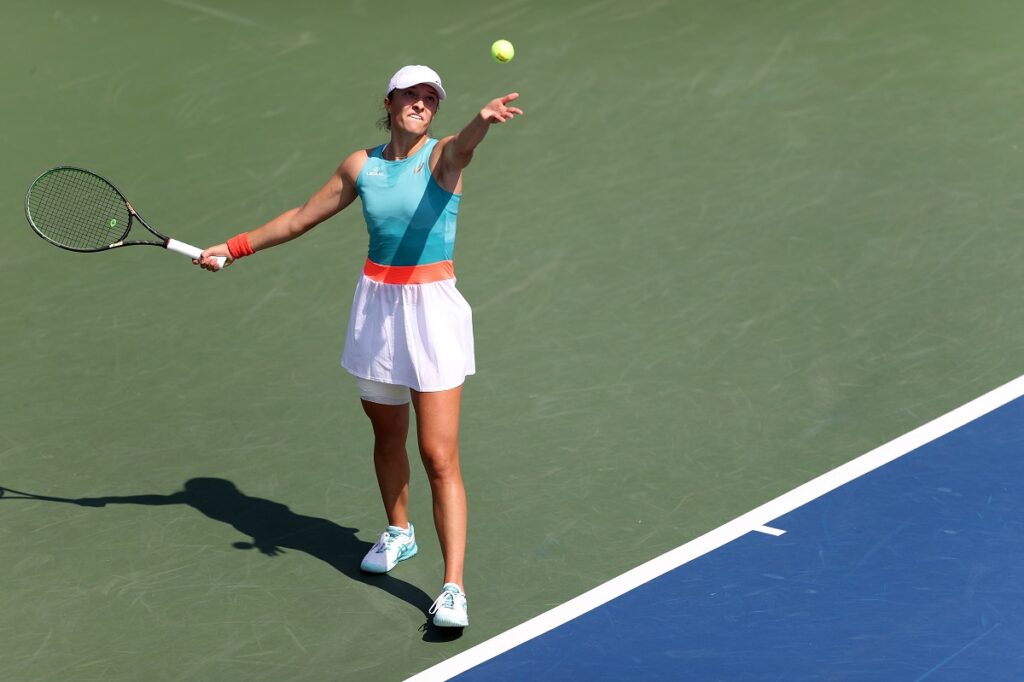Mastering the Mind: Mindfulness at 125 MPH…Part Six

During the 2020 French Open, we witnessed unseeded Iga Swiatek from Poland, ranked 54th in the world, seemingly come out of nowhere to defeat last year’s finalist, 15th seed, Marketa Vondrousova in the first round. Then in the fourth round, she defeated the top seed Simona Halep. Finally, she defeated the fourth seed, Sofia Kenin, in the finals.
What we may not have seen, due to commercial breaks, was Swaitek during changeovers: eyes closed, a deep focus on her breath. And then, during a time out because of Kenin’s injury: practicing serves and shadow stroking. Interestingly, once play resumed, a loose, centered and balanced Swiatek won 19 of the remaining 22 points to win the French Open.
So what does Swaitek’s victory have to do with you as a player? Her story is the perfect example and segway to discuss a question that one of my athletes asked me after I had taught them meditation, breathing, and centering techniques.
“So what does this meditation stuff really have to do with tennis?” The question came after a frustrating loss.
What a great question! I love when my clients are curious and want to better understand best practices for themselves. His question inspired me to elaborate exactly what meditation, breathing and centering rituals have to do with tennis.
Similar to life, there are no guarantees in sports. We often get sidetracked, distracted and focused on that which is out of our control, certainly not beneficial to accomplishing our goals. Meditation teaches us to be compassionate, patient and reflective (C.P.R.) with ourselves, exactly what’s necessary when under pressure. When we are frustrated, angry, we tend to spiral out of control, taking us further away from our goals. The practice of meditation, breathing and centering rituals allows us to balance mind and body and better understand ourselves by recognizing thought patterns, and subsequently cultivate C.P.R. On court, this allows us to better manage challenges.
Paul Annacone, former professional player and coach of Pete Sampras and Roger Federer, expressed in his interview with Crunchtime Tennis Con4, “Whether you’re the Yankees, Tom Brady, Roger Federer et al you have to figure out how to slow your pace down (slow your heart rate down), figure out how to think your way through, and trust your process…great players see the big moment and trust their process, over time it becomes habit forming.” Meditation, breathing and centering exercises specifically help us ground and slow down. This grounding instills clarity and calmness to deal with adversity and setbacks.
Lastly, it’s important to note when I was asked the question “What does this meditation stuff really have to do with tennis?” It was after a loss. Interestingly, this question never comes after a win. Then, the player usually states “I was calm, I was focused, if I lost my focus I refocused.” However, the timing of the question was a clue that the player had lost focus of their process and intention to stick to the mental principals. As in meditation, when our focus shifts away from our breath to our many thoughts, an athlete’s focus can also shift from their process to the outcome. This is an opportunity to recognize the loss of focus and shift back to our breath (the process) in a gentle way with C.P.R. Losing your focus on the court is not a problem, unless you don’t notice it. Then you are unable to take a step back and shift to your intention, what you can control: the process.
Meditation, breathing and centering routines are practices that are helpful in life. They also directly translate to competition on the court, where we lose and regain focus all the time. Additionally meditation helps you trust your instincts and your game, not to force, to be the best you can in that moment.
I encourage my clients to stick to their practice. Like Iga Swiatek. Arthur Ashe, Billie Jean King and many other tennis greats, we can see what meditation, breathing and centering routines really have to do with tennis? Everything! And very often, the difference between winning and losing.






